The turkey turned out just right, the stuffing was delightful, and the cranberry sauce was totally Instagram-worthy. But when 6 PM rolled around and twenty-three family members arrived for Thanksgiving dinner, I realized my Thanksgiving cooking schedule had completely fallen apart. It felt like I was conducting a culinary orchestra where every musician was playing their own tune.
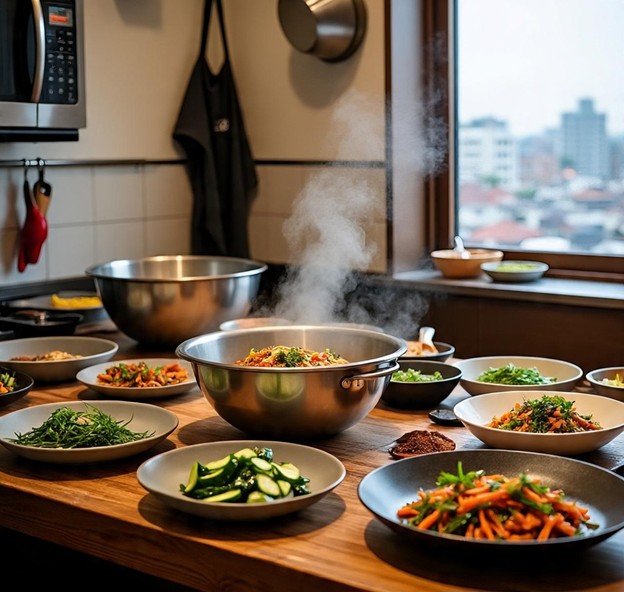
That’s when it hit me: cooking isn’t just about nailing individual techniques—it’s about mastering the timing. I had spent years honing my skills in temperature control, seasoning, and knife work, but I had completely overlooked the most crucial ingredient in cooking: time itself.
By 8:30 PM, we finally gathered around the table. The turkey was barely warm. The mashed potatoes had developed a skin. The veggies had gone from bright green to a dull olive. Twenty-three guests politely pretended it was worth the wait, but deep down, I knew the truth: I had stumbled on the one skill that truly distinguishes good home cooks from the great ones.
The Restaurant Industry’s Most Guarded Secret
Professional kitchens revolve around what they refer to as “the pass”—that crucial final stage where individual dishes come together to form complete meals. Restaurants strive to serve their dishes at the same time—this coordinated effort at the pass is key to keeping everything at the right temperature and creating a seamless dining experience. This isn’t just luck or some kind of magic; it’s mathematics cleverly disguised as culinary artistry.
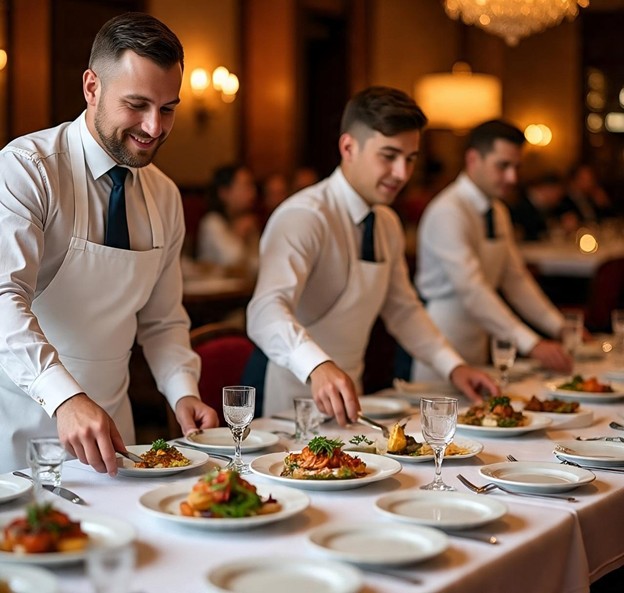
Top chefs often emphasize that timing is what transforms technical skills into dishes that are ready to serve — it’s the crucial link between preparation and plating. Chefs and expeditors often emphasize that keeping a disciplined timing at the pass is crucial for earning high marks in dining rooms. This careful expediting allows kitchens to serve up synchronized plates, leading to a more consistent experience for guests.
The secret isn’t overly complex, but it does require a shift in how we think about cooking. Instead of concentrating on when to start, professionals prioritize when everything needs to finish. Chefs often plan their multi-component meals by working backwards from the service time, and this same reverse-timeline approach can be super helpful for hosts getting ready for Thanksgiving. (Check out Epicurious’s Thanksgiving timeline guide for more tips!)
Home-cooking planners and test-kitchen editors suggest starting with your service time when planning meals. This approach can significantly cut down on stress on the big day. In fact, reverse-timeline planning is a popular strategy that makes hosting during the holidays much more manageable. When you have a clear idea of when everything will be ready, cooking shifts from a chaotic juggling act to a confident orchestration.
The Neuroscience of Culinary Overwhelm
Remember that Thanksgiving disaster I had? It wasn’t just a cooking flop—it was a full-blown cognitive overload! Research into the mental challenges of preparing meals reveals that cooking really puts a strain on our executive functions—like planning, keeping track of what we’re doing, and juggling multiple tasks. As the number of things we need to do at once goes up, our performance tends to dip. This is why tackling complicated holiday meals can quickly lead to cognitive overload for hosts.
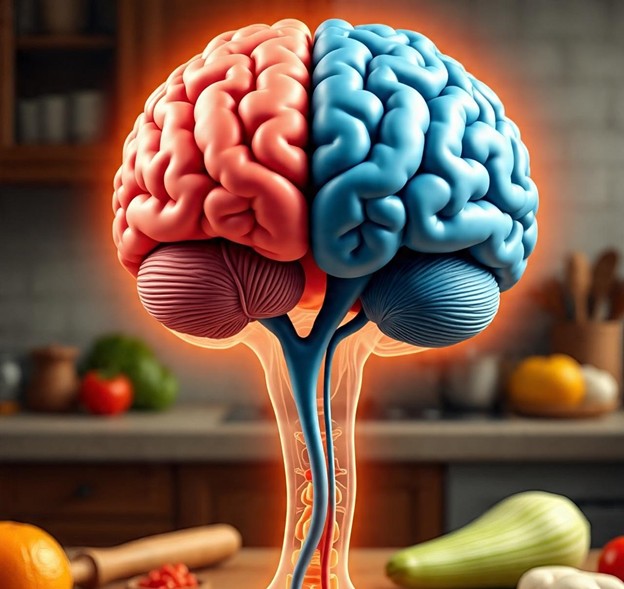
This is why whipping up a simple pasta dish feels like a breeze, while preparing a holiday feast can feel like managing an airport. It’s not that holiday meals are inherently tougher; they just push us beyond our mental limits.
The answer isn’t to cook simpler dishes; it’s about organizing those complex meals in a way that fits our cognitive capacity. Professional kitchens get this instinctively, which is why they can pull off twelve-course tasting menus without breaking a sweat.
The Timeline Revolution That Changes Everything
After my Thanksgiving disaster, I became fixated on mastering professional timing strategies. The game-changer for me was discovering backwards timeline planning—a technique that turned me from a frazzled kitchen manager into a smooth meal conductor.
So, how does it work? You start with the time you want to serve your meal and then work your way back through every single step. It’s not just about the big items; it’s everything: when to preheat the oven, when to chop the veggies, when to defrost the proteins, and even when to set the table.
The first time I used this technique, it felt like magic. Instead of rushing around at the last minute, I actually had ten minutes to relax before my guests arrived. I went from feeling like a victim of time to being its master.
But the real eye-opener wasn’t just about being efficient—it was about gaining mental freedom. When you take away the stress of timing uncertainty, your mind can shift from crisis mode to creative mode.
The Heat Retention Hack That Saves Every Meal
Professional kitchens have a little-known trick for keeping multiple dishes at just the right serving temperature: it’s all about thermal management. They know that food doesn’t just stop cooking the moment it leaves the stove; it keeps changing until it reaches the same temperature as its surroundings.
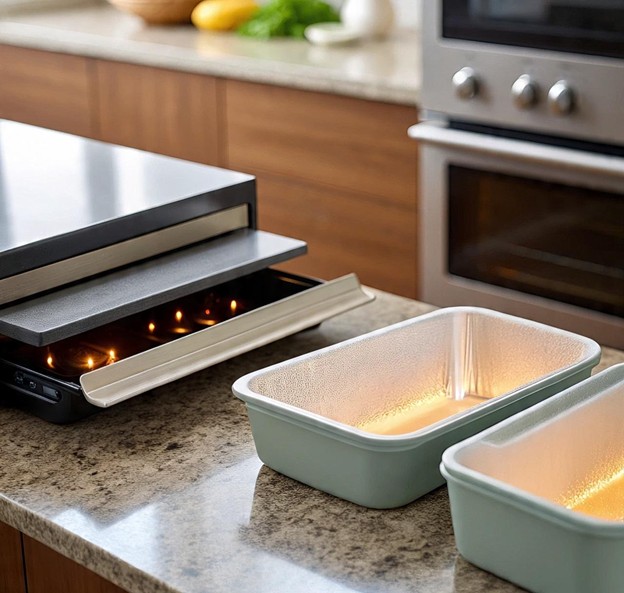
This insight completely changed how I approach meal coordination. Different dishes react in unique ways once they come off the heat. For instance, hearty, well-insulated foods like roasts and casseroles tend to retain their warmth much longer than lighter, more delicate options such as vegetables or quick sautés. The FDA recommends specific safe temperatures for keeping food hot during service. By blending this safety advice with practical thermal management techniques—like using a low oven, insulated carriers, and tight coverings—you can ensure that your dishes stay both safe and delicious until it’s time to serve.
With a little smart thermal planning—like resting, tenting, low-heat holding, and checking with a thermometer—you can wrap up a roast sooner and still serve it warm. Just keep in mind that the exact timing will vary based on the size of the roast and the method you use to hold it. (For more on carryover cooking, check out ThermoWorks.) Meanwhile, you can start your vegetables just 15 minutes before plating, ensuring they stay vibrant and crisp.
At KitchenSupports, we’ve seen how this principle boosts home cooks’ confidence. When you get the hang of thermal management, every dish becomes a flexible part of your timing strategy rather than a strict deadline.
The Three-Zone Cooking Philosophy
Professional kitchens organize their workspace into thermal zones: active cooking, holding/warming, and cold prep. This isn’t just about efficiency—it’s about creating a systematic approach to managing multiple cooking processes simultaneously.
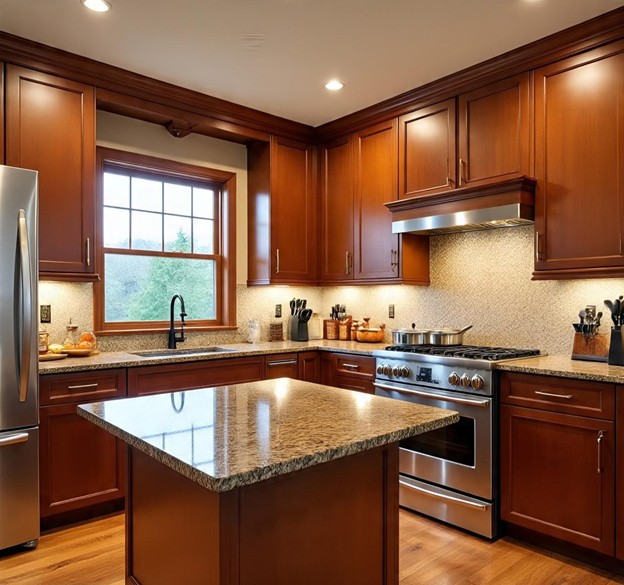
Zone 1: Active Heat (Stovetop/Primary Oven)
This is where immediate attention cooking happens. Sautéing, searing, quick-cooking vegetables. Limit this zone to 2-3 active processes maximum to avoid cognitive overload.
Zone 2: Passive Heat (Warming Oven/Slow Cooker)
This is your thermal holding area. Finished dishes that need to maintain temperature, bread that’s staying warm, sauces that are keeping consistency. This zone can handle 4-6 items simultaneously because they require minimal attention.
Zone 3: Cold Prep (Counter Space/Refrigerator)
This is where advance preparation lives. Chopped vegetables, prepared sauces, plated desserts. This zone has unlimited capacity because items here don’t compete for your attention during active cooking.
The revelation: by organizing your kitchen into thermal zones, you can manage complex meals without exceeding your cognitive bandwidth.
The Professional Secret of “Cook Ahead Compatibility”
What really sets apart a restaurant-quality meal from the chaos of home cooking? It all comes down to knowing which dishes benefit from some prep work ahead of time and which ones need your attention right at the last minute.
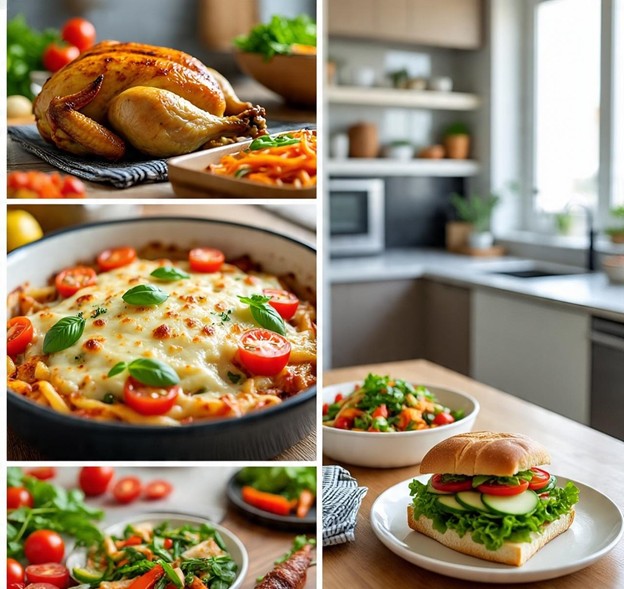
According to research from the Institute of Food Technologists, dishes like braises, stews, and slow-cooked meals actually taste better when you make them 24-48 hours in advance. On the flip side, crispy veggies, fresh herbs, and delicate sauces tend to lose their charm pretty quickly after being prepared.
This insight can turn meal planning from a guessing game into a well-thought-out strategy. Your timeline becomes a powerful tool to boost both flavor and efficiency at the same time.
I had my Thanksgiving redemption the following year when I put this principle into action:
- Turkey: Brined two days ahead, roasted, and rested for two hours before serving
- Stuffing: Fully prepared the day before and reheated while the turkey rested
- Cranberry sauce: Made three days in advance (and yes, the flavors really did get better)
- Vegetables: Prepped on the morning of, cooked during the last 20 minutes
- Gravy: Base made from turkey parts weeks ahead, finished off with pan drippings
The outcome? Every dish made it to the table at just the right temperature and bursting with flavor, and I actually got to enjoy the last hour before guests arrived instead of running around in a panic!
The Science of Resting and Carryover Cooking
Mastering the art of timing in cooking means getting a grip on carryover cooking—it’s that neat trick where food keeps cooking thanks to the heat that lingers even after it’s off the stove. Did you know that food continues to cook even after you take it off the heat? The amount it keeps cooking really depends on the size and starting temperature of the piece. For instance, larger roasts tend to retain more heat and keep cooking longer than thinner cuts.Thermometers and practical tests show that larger roasts can warm up several degrees more, while thinner cuts of meat tend to change more quickly and by smaller amounts. To ensure you hit that perfect doneness, using a thermometer and considering carryover cooking in your timing is the way to go!
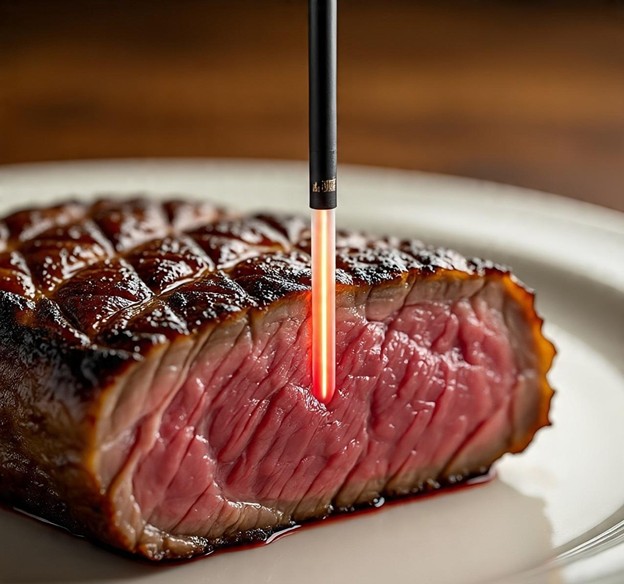
This isn’t just some fun food fact—it’s a smart cooking strategy. By factoring in carryover cooking, you can pull dishes off the heat a bit earlier, giving you more leeway in your cooking schedule while still hitting those perfect final temperatures.
The real game-changer here is that resting isn’t just a break—it’s actually a time when the food is still cooking, even if you’re not watching it. This extra mental space can be used to wrap up other dishes or simply to savor the joy of cooking.
The Flow State Formula for Complex Meals
When you bring together all these principles—thermal zones, backward timeline planning, awareness of carryover cooking, and a make-ahead strategy—something truly magical occurs. The once chaotic and stressful process of meal preparation shifts into a serene and meditative flow.
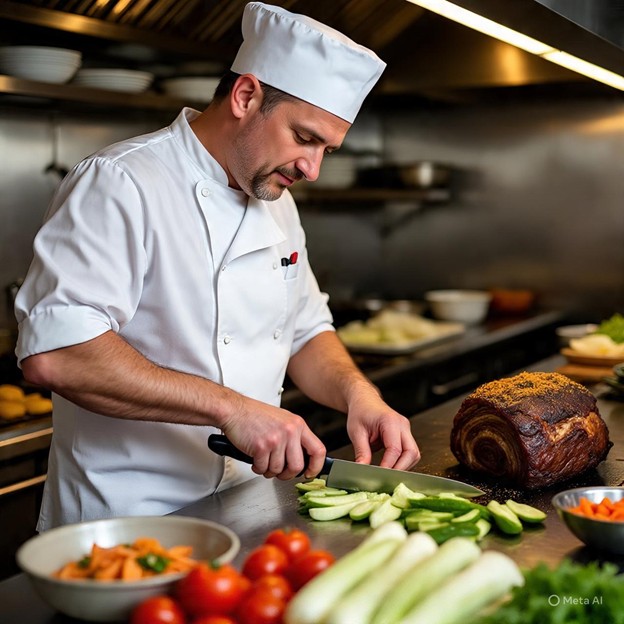
To achieve that flow state, you need clear goals, instant feedback, and just the right level of challenge. A solid timing strategy naturally provides all three. You know precisely what needs to happen and when, you can instantly track your progress, and the challenge feels just right—not too easy, but not overwhelming either.
The shift in mindset is remarkable. Instead of battling against the clock, you find yourself dancing with it. Cooking evolves into a form of creative expression rather than a frantic scramble to manage a crisis.
Beyond Thanksgiving: Everyday Timing Mastery
The principles that saved my holiday cooking can easily be applied to everyday meals as well. Even those simple weeknight dinners can really shine when you think ahead about serving time and manage your cooking temperatures wisely.
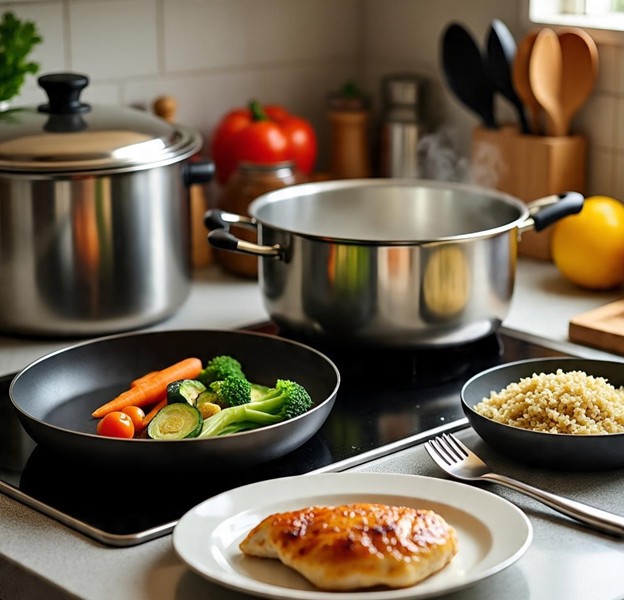
Take a basic pasta dinner, for example—it becomes a lesson in timing: start boiling the water 12 minutes before you want to eat, get the sauce going 8 minutes ahead, toss in the pasta 6 minutes before, and prep your garnishes in those last 2 minutes. The payoff? Everything comes together perfectly, and you get to enjoy a hot, well-timed meal.
The impact of this approach is incredible. When every meal is served on time and at just the right temperature, your confidence in the kitchen skyrockets. You’ll find yourself tackling more complex recipes instead of shying away from them.
Timing isn’t just about getting food on the table; it’s about turning cooking from a stressful chore into a rewarding experience. Once you get the hang of this fourth dimension of cooking, every meal can feel like a beautifully orchestrated performance rather than a chaotic scramble.
Your next perfectly timed meal is just a backward timeline away. Are you ready to stop battling against time and start mastering it?


